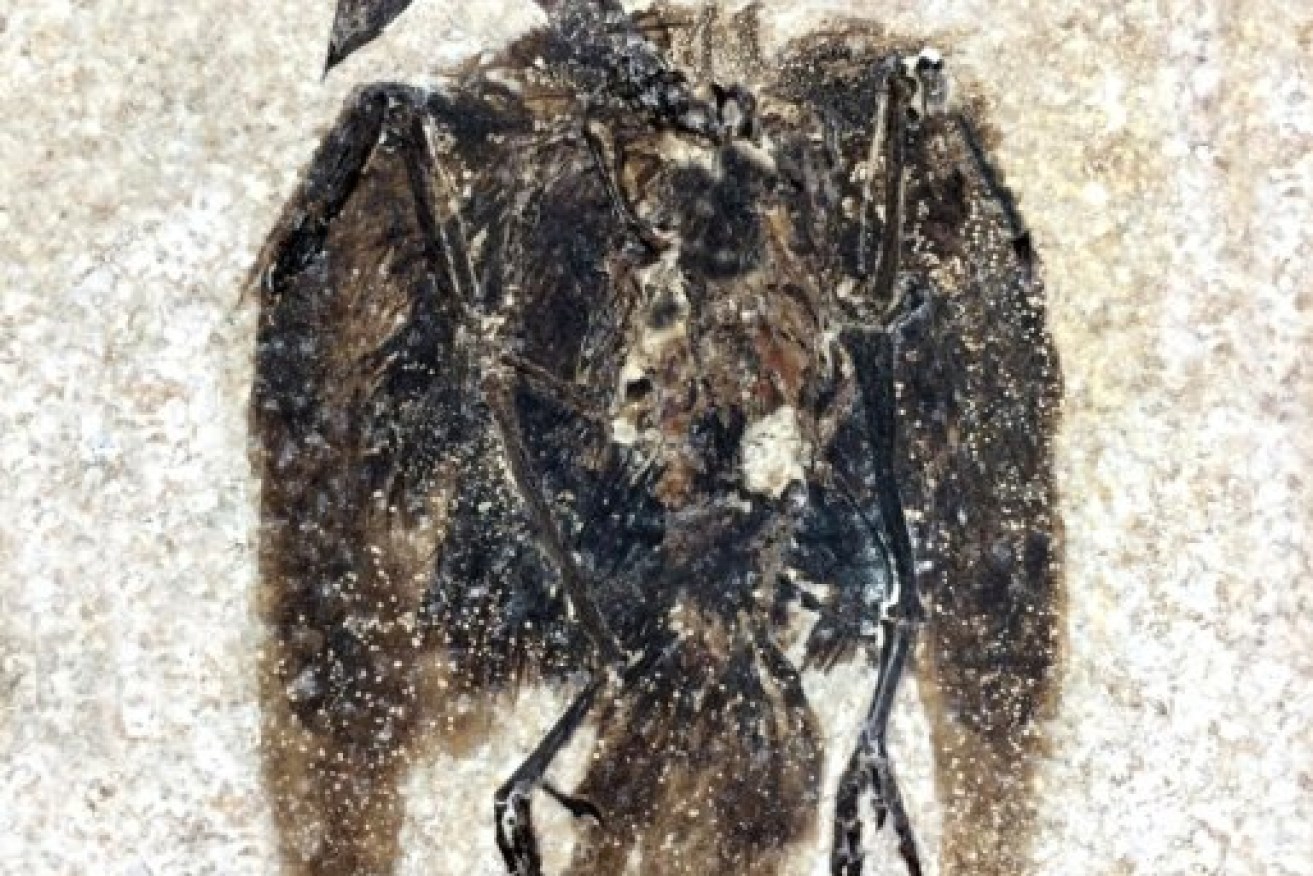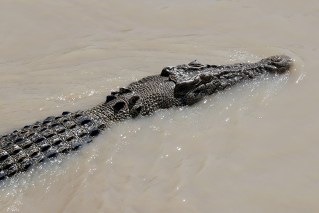World’s first sparrow: the rise of the seed-eaters, tree perchers


The Wyoming fossil might appear to be flattened like roadkill, but it thrived over a wife range in the semi-temperate world of the Eocene period. Photo: Lance Grande, Field Museum Photo: Lance Grande, Field Museum
Researchers have discovered the earliest version of the sparrow from 52 million years ago – in a rare find of a complete skeleton with feathers still attached.
The bird, discovered in the famed Fossil Lake in Wyoming, is the earliest to be found with a thick finch-like bill, good for cracking seeds – and also to have claws built for perching.
It’s the claws that make it a highly significant find in terms of the evolution of the modern bird. Because the Wyoming bird is one of the earliest ancestors of the passerines, or perching birds, which make up about 65 per cent of all modern bird species.
Meaning of the claw
The claws of earlier species were functional but clumsy. The Wyoming bird featured semi-zygodactyl feet, in which the fourth toe can be reversed – making it able to secure itself for perching.
“This is one of the earliest known perching birds. It’s fascinating because passerines today make up most of all bird species, but they were extremely rare back then,” said Dr Lance Grande, a curatorial scientist in the Integrative Research Centre at Chicago’s Field Museum, who specialises in evolutionary biology and comparative anatomy.
“This particular piece is just exquisite,” Dr Grande said. “It is a complete skeleton with the feathers still attached, which is extremely rare in the fossil record of birds.”

The Wyoming fossil might appear to be flattened like roadkill, but it thrived over a wide range in the temperate world of the Eocene period. Photo: Lance Grande, Field Museum
The discovery was announced in a paper in Current Biology that describes the Wyoming bird and a similar species that was found in Germany that lived 47 million years ago.
This is significant because the fossil record doesn’t suggest these early finch-like birds existed in great numbers during the Eocene period – yet they managed to radiate over a wide range.
“The great distance between the two fossil sites implies that these birds were widespread during the Eocene, while the scarcity of known fossils suggests a rather low number of individuals,” said Daniel Ksepka, the paper’s lead author, curator at the Bruce Museum in Connecticut.
First of the seed-eaters
The Wyoming bird, Eofringillirostrum boudreauxi, is the earliest example of a bird with a finch-like beak, similar to today’s sparrows and finches. This legacy is reflected in its name; Eofringilllirostrum means “dawn finch beak.”
The finch-like beak is an exciting find because it suggests that bird species in the Eocene period were adapting to different diets.
“We were able to show that a comparable diversity of bill types already developed in the Eocene [period] in very early ancestors of passerines,” said co-author Gerald Mayr of the Senckenberg Research Institute in Frankfurt.
Seed-eating is a fairly recent biological phenomenon.
“The earliest birds probably ate insects and fish, some may have been eating small lizards,” said Dr Grande.
“Until this discovery, we did not know much about the ecology of early passerines. E. boudreauxi gives us an important look at this.”
Dr Grande described Fossil Lake, where E. boudreauxi was found, as “a really graphic picture of an entire community locked in stone – it has everything from fishes and crocs to insects, pollen, reptiles, birds, and early mammals.”
“We have spent so much time excavating this locality, that we have a record of even the very rare things,” he said.








